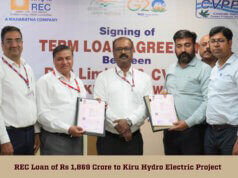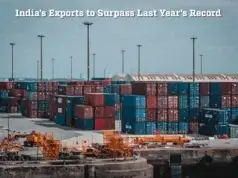Even though Reliance Power’s 100 MW Concentrated Solar Power project at Dhursar in Jaisalmer district of Rajasthan once operational will deliver power at a price comparable to the cheapest CSP available globally, there are serious doubts over whether the current policy of the Ministry of New and Renewable Energy actually supports CSP deployment in the country.
According to a recently released report titled ‘The Role of Public Finance in CSP – Case Study: Rajasthan Sun Technique’ by the Climate Policy Initiative, though the 100 MW CSP plant is set to deliver cheap power, its model may not be replicable. The study further claims that the government’s CSP policy as a whole has fallen short of the goals.
The CPI works with the objective of improving energy and land use policies around the world with particular focus on finance.
The Rs. 2,100 crore CSP project, awarded under Phase I of the Jawaharlal Nehru National Solar Mission, and the focus of the CPI study, is being implemented by Rajasthan Sun Technique Energy Private Limited, a wholly owned subsidiary of Reliance Power. It is based on compact linear Fresnel Reflector technology and likely to be commissioned soon. The company has already signed a 25 year Power Purchase Agreement with NTPC Vidyut Vyapar Nigam Limited. In July last year, the project received approval for carbon credits under the United Nations Framework Convention on Climate Change making it the world’s largest CSP project to be registered with the Clean Development Mechanism Executive Board. The company expects the project to generate 2.15 million carbon credits during the initial ten years of operation.
The study by CPI found that the first ever linear Fresnel CSP plant in the country and the largest in the world became possible due to a subsidized power tariff backed by the central government, international public debt with longer maturities and the risk taking ability of private sector actors seeking foothold in a promising solar market. The CSP plant cost 43 percent less than other linear Fresnel plants and up to 67 percent less than other large CSP plants worldwide. The investment costs translated into an electricity price of Rs. 11.97/kWh which was 22 percent lower than the CSP reference tariff set before bidding. Given that between 61 and 71 percent of the plant components were locally manufactured, as per CPI estimates, the technology demonstrated that it could help create a CSP industry in the country.
The CPI report points out that the MNRE’s decision to opt for the competitive reverse auction bidding process drove down the cost of CSP to among the lowest levels seen globally. It also encouraged project developers to bid too low since financing and policy-related challenges faced by developers meant that most plants were unlikely to be built. Only three projects out of the seven tendered under the first phase of JNNSM have been built or under construction. All the three projects were backed by financially strong developers and received long-term public debt, as a result of which much of the risk associated with building such innovative plants could be taken.
The CPI in its study suggests a number of policy adjustments aimed at scaling up CSP deployment in the country. To better the chances of project implementation, it seeks improved data on the available solar resource at the time of bidding, more realistic timelines for submitting bids and plant construction, stricter enforcement of penalties for missing deadlines and strengthening of requirements for participation in the bidding process.
In the long-term, scaling up of CSP will require a shift to domestic investments given that development bank and export credit financing is limited, the study opines. The shift can be facilitated by providing low-cost local public debt, building capacity at private banks, using credit enhancement tools and setting up pilot projects for innovative technologies to improve investor confidence.
The study also stresses that foreign debt is necessary for technology development in the medium term.











